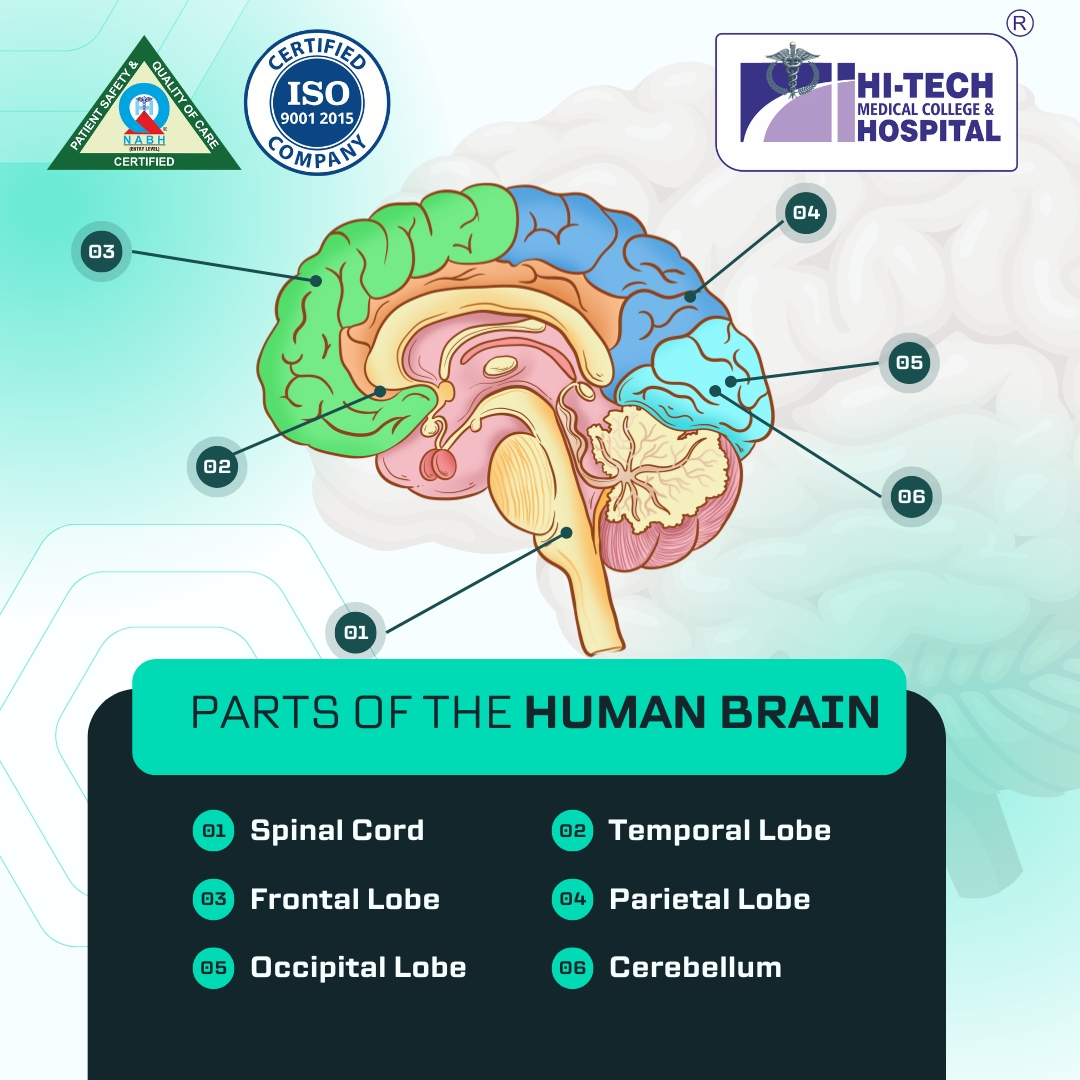Neurology is the branch of medicine that studies the nervous system, including its functions and disorders. A neurology problem can affect the brain, spinal cord, or nerves, leading to a wide range of symptoms that impact daily life. Understanding the neurological disorders list and recognizing neurological disorders symptoms early can help individuals seek timely medical care and improve their quality of life.
Recognizing Early Signs of Neurological Disorders
Recognizing early neurological disorders symptoms is key to seeking timely medical care. The brain often signals when something is wrong. Here are some common warning signs:
1. Persistent Fatigue
Extreme fatigue, especially in conditions like multiple sclerosis, goes beyond normal tiredness. If exhaustion disrupts your daily routine, it’s essential to consult a healthcare provider.
2. Sudden, Severe Headaches
Intense headaches that appear suddenly may signal serious conditions like brain tumors or aneurysms. Unlike regular headaches, these are often severe and require immediate medical attention.
3. Tingling or Numbness
A “pins and needles” sensation, especially in the hands or feet, may indicate nerve damage or peripheral neuropathy. If this symptom persists or spreads, consult a doctor to rule out any serious neurology problems.
4. Memory Lapses and Confusion
While occasional forgetfulness is normal, persistent memory issues may be an early sign of Alzheimer’s disease. Difficulty with familiar tasks or confusion in familiar settings warrants a medical evaluation for possible neurological disorders and symptoms.
5. Unsteady Gait and Balance Issues
Balance problems and an unsteady gait can be early signs of Parkinson’s disease, a common neurology problem. If you notice unexplained changes in movement, seek medical advice for early diagnosis and treatment options.
6. Difficulty Speaking or Numbness in Limbs
Sudden numbness, especially on one side of the body, slurred speech, or difficulty understanding words can indicate a stroke. Immediate medical attention is crucial to minimize brain damage.
7. Unexplained Muscle Weakness
Muscle weakness that persists may be an early indicator of multiple sclerosis or another neurology problem. If weakness is accompanied by tingling or balance issues, a healthcare evaluation is necessary.

Common Neurology Problems: An Overview
Neurological disorders affect millions worldwide, presenting unique challenges and requiring specific treatment approaches. These conditions range from mild to severe, often disrupting daily routines, work, and personal life. Below are some of the most prevalent neurological problems and their impact:
1. Migraines
Migraines are not just headaches; they are a neurology problem characterized by intense, throbbing pain, nausea, and sensitivity to light and sound. These episodes can be debilitating, making treatment with medications and lifestyle changes essential.
2. Epilepsy
Epilepsy is a neurological disorder that causes recurrent seizures due to abnormal brain activity. Seizures vary in severity and frequency, affecting both cognitive and physical health. Proper diagnosis and treatment, including medications, can help manage the condition effectively.
3. Parkinson’s Disease
Parkinson’s disease is a progressive neurology problem that affects movement, causing tremors, stiffness, and balance issues. As the disease advances, it can also impact cognitive function and mood. While there is no cure, therapies and medications help manage symptoms.
4. Multiple Sclerosis (MS)
MS is a chronic neurological disorder that affects the central nervous system, leading to muscle weakness, vision problems, and cognitive difficulties. The unpredictable nature of MS makes early diagnosis and treatment crucial in controlling symptoms and slowing progression.
5. Alzheimer’s Disease
Alzheimer’s is the most common form of dementia, affecting memory, thinking, and behavior. Symptoms worsen over time, leading to significant impairment in daily activities. Early intervention and supportive care can help manage symptoms and improve quality of life.
6. Neuropathy
Neuropathy, often associated with diabetes, results in nerve damage, causing pain, numbness, and loss of sensation, particularly in the hands and feet. Managing underlying conditions and seeking medical care can help prevent complications.

When to Seek a Neurology Specialist
Understanding when to consult a neurology specialist is essential if you’re experiencing any neurology problem. Early intervention not only helps manage a neurology problem effectively but also targets the onset of neurological disorders symptoms. Often, subtle signs—listed in the neurological disorders list—are the first indicators that something is amiss in your nervous system.
If you experience persistent or unexplained symptoms such as severe headaches, dizziness, blurred vision, slurred speech, or muscle weakness, it could be a neurology problem that needs professional evaluation. These symptoms, which are part of the broader neurological disorders symptoms spectrum, should prompt you to seek medical advice without delay. Waiting too long can allow these issues to develop further, potentially expanding the neurological disorders list and making treatment more challenging. Early diagnosis by a neurologist ensures that your neurology problem is identified and managed before it escalates. This proactive approach leads to more accurate treatment, better symptom control, and an overall improvement in quality of life.
How are neurological problems diagnosed?
Diagnosing neurology problems involves a combination of medical tests and expert clinical assessment. If you experience symptoms like headaches, dizziness, muscle weakness, or memory loss, a neurologist will use several diagnostic tools to determine the underlying cause.
Step 1: Neurological Examination
The first step in diagnosing neurology problems is a thorough neurological exam. This involves checking:
- Reflexes, such as the knee-jerk response
- Muscle strength and coordination
- Balance and walking ability
These tests provide essential clues about nerve and brain function, helping neurologists pinpoint areas of concern.
Step 2: Brain and Nerve Imaging Tests
If further investigation is needed, your doctor may recommend imaging tests to get a closer look at the brain and spinal cord:
- MRI (Magnetic Resonance Imaging): Uses magnets and radio waves to produce detailed images, helping detect neurology problems like tumors, multiple sclerosis, or brain injuries.
- CT Scan (Computed Tomography): Uses X-rays to capture cross-sectional images of the brain, often used to detect bleeding, skull fractures, or strokes.
Both tests are non-invasive and provide critical insights into symptoms of neurological disorders.
Step 3: Nerve and Muscle Tests
For conditions affecting nerves and muscles, your neurologist may perform:
- Electromyography (EMG): Measures electrical activity in muscles to diagnose conditions like peripheral neuropathy, muscular dystrophy, or ALS. Small needles are inserted into muscles to record their response.
- Nerve Conduction Studies (NCS): Evaluates how quickly electrical signals travel through nerves, helping detect nerve damage.
These tests are particularly useful for diagnosing neurological disorders and symptoms related to weakness, numbness, or chronic pain.
Step 4: Lumbar Puncture (Spinal Tap)
In some cases, a lumbar puncture (spinal tap) is necessary. A doctor inserts a thin needle into the lower back to collect cerebrospinal fluid (CSF). This test helps diagnose:
- Infections like meningitis
- Multiple sclerosis
- Inflammatory neurological diseases
Though slightly invasive, it provides crucial information for an accurate diagnosis.
Step 5: Genetic Testing for Neurological Conditions
If a hereditary neurology problem is suspected, genetic testing may help identify mutations linked to disorders like Huntington’s disease or epilepsy. Genetic counselors can guide patients and families through test results and future health risks.

Preventing and managing neurological conditions
Taking care of your brain health is essential for preventing and managing neurology problems. Many conditions found in the neurological disorders list can be controlled with simple lifestyle changes. From staying active to eating brain-boosting foods, small steps can help reduce the risk of developing neurological disorders and symptoms and improve overall well-being.
Stay Active for a Healthier Brain
Regular exercise plays a key role in managing neurology problems. It can help improve mobility, reduce fatigue, and enhance overall quality of life for people with neurological conditions like multiple sclerosis and Parkinson’s disease. Low-impact activities such as walking, swimming, and yoga can support brain function, improve balance, and slow disease progression.
Eat Brain-Boosting Foods
A well-balanced diet rich in antioxidants is another powerful way to prevent neurological disorders and symptoms. Foods like berries, nuts, and leafy greens help protect brain cells and may lower the risk of conditions included in the neurological disorders list, such as Alzheimer’s disease and stroke. Including these foods in your daily meals can support cognitive function and overall neurological health.
Manage Stress to Reduce Symptoms
Chronic stress can make neurology problems worse. For example, migraines may become more frequent, and seizures in epilepsy patients may be triggered by stress. Practicing relaxation techniques like deep breathing, mindfulness meditation, and yoga can help you manage stress and reduce symptoms of neurological disorders naturally.
Avoid Harmful Habits
Smoking and excessive alcohol consumption are linked to several conditions in the neurological disorders list. Smoking increases the risk of stroke and cognitive decline, while heavy alcohol use can lead to severe brain disorders such as Wernicke-Korsakoff syndrome. Making healthy choices today can protect your brain and lower the chances of experiencing neurological disorders and symptoms in the future.
How to Treat Neurological Issues
Treating a neurology problem often requires a combination of medications, lifestyle adjustments, and specialized therapies. The right treatment depends on the type and severity of the condition, as well as individual patient needs.
For example, people with epilepsy may take anticonvulsant medications to control seizures and improve their quality of life. Those diagnosed with multiple sclerosis (MS) often benefit from physical therapy to maintain mobility and manage neurological disorders symptoms like muscle weakness and fatigue. Since every case is different, treatments must be tailored to each patient.
In some cases, surgical intervention is necessary. Deep brain stimulation (DBS) is a well-known procedure for managing Parkinson’s disease, significantly reducing symptoms such as tremors and motor fluctuations. This involves implanting electrodes in specific areas of the brain, which are connected to a device that delivers electrical impulses to regulate abnormal brain activity. For many patients, this technique offers relief when medications are not effective.
Lifestyle changes also play a crucial role in managing neurology problems. People suffering from migraines can benefit from dietary adjustments, regular exercise, and maintaining a consistent sleep schedule. Identifying and avoiding triggers, along with stress-reduction techniques, can significantly decrease the frequency and severity of migraines. Cognitive Behavioral Therapy (CBT) is another valuable tool, particularly for individuals managing chronic pain. It helps patients develop coping strategies to improve mental health while addressing the physical discomfort associated with many neurological conditions.
Advancements in medical research are paving the way for innovative treatments. Stem cell therapy, while still experimental, is showing promise for repairing nerve damage in conditions like spinal cord injuries and dementia. As research progresses, these emerging treatments may revolutionize how neurology problems are managed, offering hope to patients who have not responded to traditional therapies.
.

